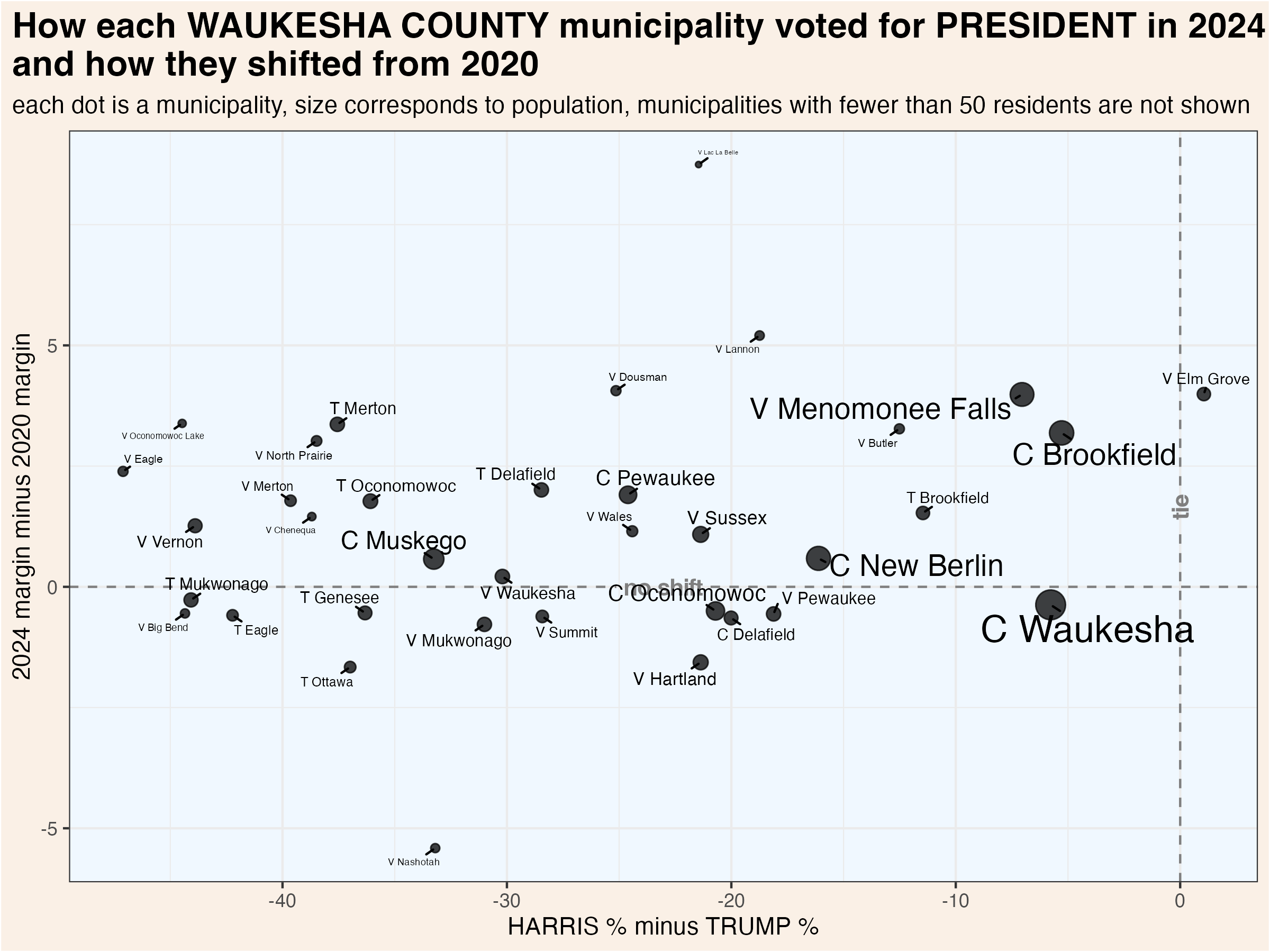
70 Waukesha
Waukesha County (pop. 409,000) is Wisconsin’s third largest county and the number one source of Republican votes in the state. It is the largest suburban county in the Milwaukee metro. Waukesha’ s population is very highly educated, relative to state averages, and it has the highest median income. Politically, it has long been a crucial source of votes for Republican statewide candidates. However, since 2016, the county has seen narrowing margins of victory for GOP candidates.
70.1 Demographics

70.2 County Election Results

Click each column name to sort its values.
70.3 Municipality Election Results
The City of Waukesha is the county’s largest single municipality. It is also the most politically competitive municipality. In 2012, Mitt Romney won the city by 15 points. Trump won it by 10 points in 2016, 5 points in 2020, and 6 points in 2024. Most other municipalities are more Republican-leaning, but they still follow the same general pattern of shifting steadily away from Republican candidates across multiple recent election cycles for president and governor.
This map shows the location of each municipality in the county, as it existed in 2022.

These dot plots show the most recent election results in each municipality.



To more clearly illustrate recent changes in municipality voting trends, these scatterplots compare the most recent vote for president and senator with the shift from that office’s previous election.


These maps show show every election result since 2000 in each municipality.



Click each column name to sort its values.
70.4 Supreme Court Election Results
Wisconsin’s Supreme Court has 7 justices, each of whom are elected to 10 year terms in statewide elections held in April. State law prohibits more than one Supreme Court election from being held in a single year. If a seat becomes vacant, the governor appoints a replacement who serves until the next year in which no court election is already scheduled. If more than two candidates achieve ballot access, a nonpartisan, top-two primary is held in February.
Court elections are formally nonpartisan, but candidates are usually supported by either liberals or conservatives. In recent years, it has become common for the Democratic and Republican parties to endorse and actively campaign on behalf of favored judicial candidates. The liberal and conservative labels indicated in the following graphs and tables are based on widely recognized tendencies, not any formal affiliation.
70.4.1 County Election Results
This graphic compares how presidential, gubernatorial, and court elections have trended over the past quarter century. Click the “Table” tab to see detailed results for the Supreme Court races.

70.4.2 Municipality Election Results
The following table shows the results of each Supreme Court election by municipality. The graphic visualizes the shifts over the past three court elections.
